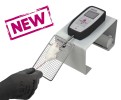Authors
Padilla CJ, Harris H, Volek JS, Clark BC, Arnold WD.
Lab
University of Missouri System, Columbia, MO, USA
Journal
J Nutr Health Aging
Abstract
Objective: Pathological, age-related loss of muscle function, commonly referred to as sarcopenia, contributes to loss of mobility, impaired independence, as well as increased risk of adverse health events. Sarcopenia has been attributed to changes in both neural and muscular integrity during aging. Current treatment options are primarily limited to exercise and dietary protein fortification, but the therapeutic impact of these approaches are often inadequate. Prior work has suggested that a ketogenic diet (KD) might improve healthspan and lifespan in aging mice. Thus, we sought to investigate the effects of a KD on neuromuscular indices of sarcopenia in aged C57BL/6 mice. Design: A randomized, controlled pre-clinical experiment consisting of longitudinal assessments performed starting at 22-months of age (baseline) as well as 2, 6 and 10 weeks after the start of a KD vs. regular chow intervention. Setting: Preclinical laboratory study. Sample size: Thirty-six 22-month-old mice were randomized into 2 dietary groups: KD [n = 22 (13 female and 9 male)], and regular chow [n = 15 (7 female and 8 male)]. Measurements: Measures included body mass, hindlimb and all limb grip strength, rotarod for motor performance, plantarflexion muscle contractility, motor unit number estimations (MUNE), and repetitive nerve stimulation (RNS) as an index of neuromuscular junction transmission efficacy recorded from the gastrocnemius muscle. At end point, muscle wet weight and blood samples were collected to assess blood beta-hydroxybutyrate levels. Statistical analysis: Primary analyses were two-way mixed effects ANOVA (diet and time × diet) to determine the effect of a KD on indices of motor function (grip, rotarod) and indices of motor unit (MUNE) and muscle (contractility) function. Results: Beta-hydroxybutyrate (BHB) was significantly higher at 10 weeks in mice on a KD vs control group (0.83 ± 0.44 mmol/l versus 0.42 ± 0.21 mmol/l, η2 = 0.265, unpaired t-test, p = 0.0060). Mice on the KD intervention demonstrated significantly increased hindlimb grip strength (diet, p = 0.0001; time × diet, p = 0.0030), all limb grip strength (diet, p = 0.0005; time × diet, p = 0.0523), and rotarod latency to fall (diet, p = 0.0126; time × diet, p = 0.0021). Mice treated with the KD intervention also demonstrated increased MUNE (diet, p = 0.0465; time × diet, p = 0.0064), but no difference in muscle contractility (diet, p = 0.5248; time × diet, p = 0.5836) or RNS (diet, p = 0.3562; time × diet, p = 0.9871). Conclusion: KD intervention improved neuromuscular and motor function in aged mice. This pre-clinical work suggests that further research is needed to assess the efficacy and physiological effects of a KD on indices of sarcopenia.
BIOSEB Instruments Used:
Grip strength test (BIO-GS4)

 Pain - Thermal Allodynia / Hyperalgesia
Pain - Thermal Allodynia / Hyperalgesia Pain - Spontaneous Pain - Postural Deficit
Pain - Spontaneous Pain - Postural Deficit Pain - Mechanical Allodynia / Hyperalgesia
Pain - Mechanical Allodynia / Hyperalgesia Learning/Memory - Attention - Addiction
Learning/Memory - Attention - Addiction Physiology & Respiratory Research
Physiology & Respiratory Research
 Pain
Pain Central Nervous System (CNS)
Central Nervous System (CNS) Neurodegeneration
Neurodegeneration Sensory system
Sensory system Motor control
Motor control Mood Disorders
Mood Disorders Other disorders
Other disorders Muscular system
Muscular system Joints
Joints Metabolism
Metabolism Cross-disciplinary subjects
Cross-disciplinary subjects Preclinical studies and opioids: role in crisis management in the United States
Preclinical studies and opioids: role in crisis management in the United States 